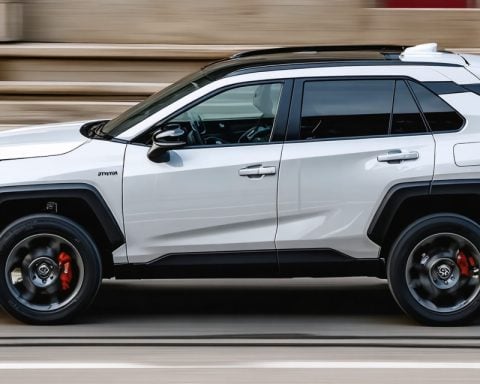- The Tesla Model 3 and BMW 3 Series are similarly priced luxury sedans, with distinct cost implications over time.
- Tesla Model 3 offers lower maintenance costs, estimated at $1,000 over five years, and a total ownership expense of $58,574, including insurance and electricity.
- BMW 3 Series incurs higher costs, with insurance at $14,400 and fuel exceeding $8,000 over the same period.
- Tesla saves owners approximately $954 annually compared to the BMW, hinting at a financial advantage for electric vehicles (EVs).
- Depreciation poses a significant challenge for EVs, including luxury models like the Tesla, Ford Mustang, and Porsche Taycan.
- The shift towards electric vehicles promises financial benefits, but potential buyers should consider depreciation and long-term cost implications.
In the battle of luxury sedans, the Tesla Model 3 and BMW 3 Series often duel for dominance. At first glance, these vehicles appear neck-and-neck, tantalizingly priced around the $45,000 mark. However, beneath the hood, the maintenance script unfolds a different story.
Picture this: a Tesla gliding silently down a bustling boulevard. It isn’t just the whisper-quiet motor that’s reason for celebration but the modest expenses that accompany this vehicle. Over five years, owners might find themselves spending a meager $1,000 for maintenance. Add in insurance and electricity, and Tesla’s five-year ownership expense culminates at $58,574. But reliability can throw an unexpected curveball, adding an unforeseen $3,000 to the Tesla’s tab.
Contrast this with the BMW 3 Series, a paragon of quintessential luxury. At first, it seems a companion of equal merit until you consider its voracious appetite for insurance funds, nearly doubling that of the Tesla, at $14,400. The thirst for fuel, consuming over $8,000, is a stark reminder of conventional engines.
Yet, the real intrigue lies in the subtle $954 annual savings the Tesla cinches over the BMW. These numbers hint at a fascinating shift—the wallets of drivers seem to lean electric, quietly enjoying fiscal reprieve in an era dominated by perpetual price hikes.
The conversation doesn’t stop with a mere comparison. Dive deeper into the electrified realm, and depreciation looms large. Electric vehicles (EVs), though cheaper to run, face a rapid depreciation challenge, a concern shared by high-end peers like the Ford Mustang and Porsche Taycan. These flagship names discover the hard way that the road to the future is paved with rapid value loss.
The evolving landscape suggests that as electric becomes the norm, depreciation might stabilize. For now, drivers should weigh initial markdown savings against the long-term gains of lower running costs. As the curtain unfolds, one observation grounds itself: the electric future arrives with both promise and a price tag, needing careful navigation to reap its full benefits.
So, the next time you see a Tesla glide past or hear the purr of a BMW around a bend, remember the untold story of economic balance playing out beneath their chassis.
Tesla vs. BMW: Unveiling the Hidden Costs and Benefits Beyond Initial Purchase
Overview: Tesla Model 3 vs. BMW 3 Series
Both the Tesla Model 3 and the BMW 3 Series represent the epitome of luxury in the sedan market. While they may be competitively priced at around $45,000, the costs associated with their ownership over time tell a vastly different story.
Maintenance and Operating Costs
1. Tesla Model 3 Advantage:
– Maintenance Costs: Tesla’s lack of traditional internal combustion engine components translates into reduced maintenance. Owners typically pay around $1,000 over five years.
– Insurance and Energy: Combined expenses for insurance and electricity push the total five-year cost to $58,574. An unexpected reliability issue might add $3,000 more.
2. BMW 3 Series Insights:
– Insurance and Fuel Costs: BMW’s insurance costs are almost double that of Tesla, at $14,400, with fuel expenses exceeding $8,000.
– Total Cost: These factors can lead to a significant impact on the overall cost of ownership despite the similar initial purchase price.
Depreciation Dynamics
– Tesla Depreciation: Electric vehicles like the Tesla Model 3 face rapid depreciation, partly due to the fast pace of technological advancement.
– BMW Depreciation: Gasoline vehicles also depreciate, but often at a slower rate after the initial years.
How to Weigh the Costs
– Short-Term vs. Long-Term: While electric vehicles are more cost-effective in terms of maintenance and operation, their rapid depreciation needs consideration.
– Economic Shifts: There is a potential for depreciation rates to stabilize as electric vehicles become more mainstream and technology matures.
Real-World Use Cases
– Ideal Owners: Urban drivers who have access to charging infrastructure will find Tesla’s low maintenance and fuel costs appealing.
– Long Commutes: BMW may appeal to those who value traditional driving dynamics and do not prioritize fuel savings.
Industry Trends and Predictions
– Growth of EV Market: Electric vehicles are expected to dominate the market within the next decade, driven by policy changes and decreasing battery costs.
– Sustainability Initiatives: With increasing environmental concerns, manufacturers are focusing on sustainability, aligning more with electric vehicle adoption.
Security, Controversies, and Limitations
– Tesla Challenges: While Tesla’s technology is cutting-edge, issues with build quality and supply chain challenges have been noted.
– BMW Limitations: Traditional engines face stricter regulatory scrutiny, potentially increasing future ownership costs related to technology upgrades or carbon taxes.
Pros and Cons Overview
Tesla Model 3
– Pros: Low maintenance costs, technological advancements, environmental benefits.
– Cons: Rapid depreciation, reliability concerns.
BMW 3 Series
– Pros: Renowned driving dynamics, luxury interior.
– Cons: Higher maintenance and fuel costs, less future-proof compared to EVs.
Actionable Recommendations
– Consider Your Driving Habits: Assess whether your driving style and needs align better with the low maintenance, eco-friendly nature of the Tesla Model 3 or the traditional luxury and dynamics of the BMW 3 Series.
– Evaluate Long-Term Costs: Factor in potential depreciation and ongoing costs when making your purchase decision.
– Check Local Incentives: Many regions offer incentives for EV purchases, which can significantly offset initial costs.
For more insights into the world of automotive trends, visit Tesla and BMW.














